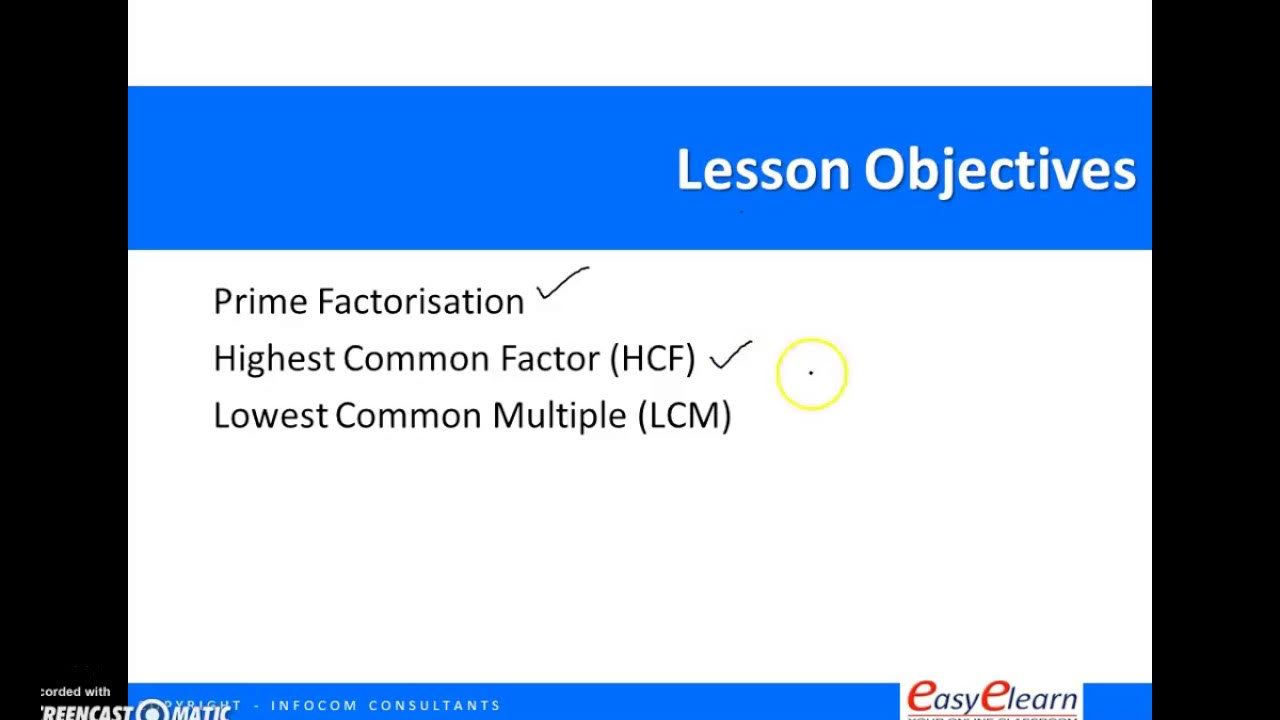FATORAÇÃO RESUMÃO | FATOR COMUM , AGRUPAMENTO, TRINÔMIO QUADRADO E DIFERENÇA ENTRE DOIS QUADRADOS
Summary
TLDRThis video explains various cases of factorization in algebra, starting with the common factor in evidence. It demonstrates how to identify and factor out common elements, including numbers and letters. The video then introduces factorization by grouping, perfect square trinomials, and the difference of two squares. Each method is illustrated with clear examples, emphasizing the importance of recognizing patterns, such as common factors and specific properties of expressions. It encourages viewers to practice these techniques for simplifying algebraic expressions and enhancing their mathematical skills.
Takeaways
- 😀 Common factor factorization involves identifying the repeating number or letter in an algebraic expression and extracting it as a factor.
- 😀 To factorize an expression, you separate the common factor from the terms, creating a simplified product of factors.
- 😀 The greatest common divisor (GCD) can be used to find the common factor when numbers are harder to spot directly.
- 😀 For factorization, look for common factors in both numbers and variables. For example, when factoring 18 and 12, use the GCD method to identify 6 as the common factor.
- 😀 In factorization by grouping, break the expression into parts to see if common factors appear in each part.
- 😀 Always start by checking if there is a common factor across all terms of the expression. If not, consider other factorization methods.
- 😀 In the perfect square trinomial case, factorize by recognizing the square of the first term and last term, and multiplying them with the middle term.
- 😀 Factorization of a perfect square trinomial always results in the square of the sum or difference of two terms.
- 😀 Grouping factorization can be done when there is a common factor across parts of an expression, but it requires the correct number of terms in each group.
- 😀 The difference of squares is a specific case where you factorize by taking the square root of both terms and then multiplying the sum and difference of those square roots.
Q & A
What is the first case of factorization discussed in the script?
-The first case discussed is factorization by the common factor in evidence, where you identify and extract the common factor from an algebraic expression.
How do you identify the common factor in an algebraic expression?
-You identify the common factor by observing the terms of the expression and looking for repeated numbers or letters (variables) across all the terms. The repeated elements are the common factor.
What is the purpose of factorization in mathematics?
-Factorization simplifies algebraic expressions by writing them as products of factors, making them easier to manipulate in further mathematical operations.
What do you do when the common factor in evidence is not immediately apparent?
-You can calculate the Greatest Common Divisor (GCD) of the numbers involved to identify the common factor, especially when the numbers are more complex, like 18 and 12.
How is the Greatest Common Divisor (GCD) found?
-The GCD is found by dividing both numbers by their common divisors, continuing until you can't divide further, then multiplying the divisors together to get the GCD.
What is the factorization method for expressions with four terms?
-The factorization method for expressions with four terms is grouping. You divide the expression into two parts, factor each part separately, and then identify another common factor if possible.
When can factorization by grouping be applied?
-Factorization by grouping can be applied when an algebraic expression has multiple terms, and you can divide the expression into groups that each have a common factor.
What is a perfect square trinomial, and how is it factorized?
-A perfect square trinomial is an expression that can be factored into the square of a binomial. To factor it, you take the square root of the first and last terms and form the binomial, which when squared gives the original expression.
What is the general rule for factoring a difference of squares?
-For factoring a difference of squares, you take the square root of the first term, take the square root of the second term, and then write it as the product of the sum and difference of those square roots.
How does the script explain the difference between factorization of a perfect square trinomial and a difference of squares?
-The script explains that a perfect square trinomial factors as the square of a binomial, whereas a difference of squares factors as the product of the sum and difference of the square roots of the two terms.
Outlines

This section is available to paid users only. Please upgrade to access this part.
Upgrade NowMindmap

This section is available to paid users only. Please upgrade to access this part.
Upgrade NowKeywords

This section is available to paid users only. Please upgrade to access this part.
Upgrade NowHighlights

This section is available to paid users only. Please upgrade to access this part.
Upgrade NowTranscripts

This section is available to paid users only. Please upgrade to access this part.
Upgrade NowBrowse More Related Video

What is meant by Factorising? What is a Factor? | ExamSolutions

LE COURS : Factorisations - Troisième

EasyElearn - Maths Tuition Singapore - Secondary 1 - HCF and LCM

Factorising grade 10: Common Factor Revision

How To Factor The Greatest Common Factor In a Polynomial | Algebra

Factoring Polynomials using Greatest Common Monomial Factor
5.0 / 5 (0 votes)